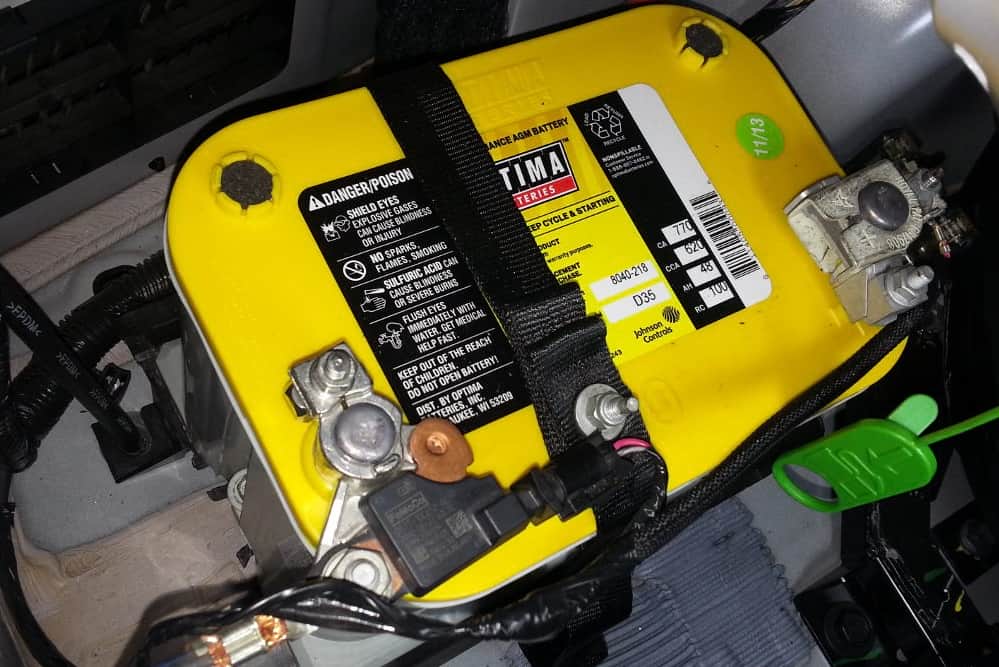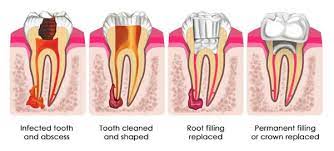Before diving into maintenance tips, it’s important to understand the basics of your 12V motorcycle battery. These batteries are designed to provide the necessary power to start your motorcycle and keep its electrical systems running. They are typically rechargeable, meaning they can be recharged multiple times before needing replacement.

The Anatomy of a 12V Motorcycle Battery
A 12V motorcycle battery consists of several key components: the positive and negative terminals, cells filled with electrolyte, and a casing to protect these elements. Understanding these parts can help you better diagnose issues and perform maintenance. Each cell produces around 2.1 volts, contributing to the total 12.6 volts when fully charged.
How It Works
When you start your motorcycle, the battery provides a surge of electricity to the starter motor, igniting the engine. It also powers the lights, horn, and other electrical components while the motorcycle is running. The alternator then recharges the battery, ensuring it has enough power for the next start.
Importance of Voltage
Voltage is a crucial indicator of your battery’s health. A fully charged 12V battery should read between 12.6 to 13.5 volts. Regularly checking the voltage can help you catch potential issues early, preventing unexpected breakdowns.
Common Myths
There are many misconceptions about motorcycle batteries, such as the idea that all batteries are maintenance-free. In reality, even sealed batteries benefit from regular inspection and care. Dispelling these myths can help you maintain your battery more effectively.
Types of 12V Motorcycle Batteries
There are several types of 12V motorcycle batteries, each with its own advantages and disadvantages:
Lead-Acid Batteries
Lead-acid batteries are the most common and affordable. They require regular maintenance, such as topping up with distilled water. Despite their need for upkeep, they are robust and reliable, making them a popular choice for many riders.
AGM (Absorbent Glass Mat) Batteries
AGM batteries are sealed and require less maintenance than lead-acid batteries. They are also more resistant to vibration, making them ideal for motorcycles that are frequently ridden on rough terrains. Additionally, AGM batteries have a lower self-discharge rate, meaning they can hold their charge longer when not in use.
Lithium-Ion Batteries
Lithium-ion batteries are lightweight and have a longer lifespan but are more expensive. They offer faster charging times and are less affected by temperature changes. However, they require a specific type of charger and can be sensitive to overcharging.
Gel Batteries
Gel batteries are another sealed option that uses a gel electrolyte. They are spill-proof and can withstand extreme conditions better than other types. These batteries are perfect for riders who frequently travel in harsh environments.
Hybrid Batteries
Hybrid batteries combine elements of different technologies to offer a balance of performance and durability. They can be a good middle-ground option for riders looking for versatility and reliability without breaking the bank.
Essential Maintenance Tips
Regular Inspection
Inspect your 12V motorcycle battery regularly. Look for any signs of damage, such as cracks or leaks. Check the terminals for corrosion, which can affect the battery’s performance. If you notice any issues, address them immediately.
Frequent inspections can help you catch small problems before they become major issues. Make it a habit to check your battery at least once a month. During these inspections, also check the battery casing for any signs of swelling or distortion.
Keep It Clean
Dirt and grime can accumulate on your battery, leading to poor performance. Clean the battery terminals with a mixture of baking soda and water to remove any corrosion. Use a wire brush to scrub the terminals gently. Make sure to rinse with clean water and dry thoroughly.
Cleaning isn’t just about the terminals; the entire battery should be kept free of dirt and debris. A clean battery is less likely to overheat and will perform more efficiently. Regular cleaning can also prevent the buildup of moisture, which can lead to corrosion.
Check the Electrolyte Levels
For lead-acid batteries, it’s crucial to check the electrolyte levels regularly. The electrolyte is a mixture of sulfuric acid and water that facilitates the flow of electricity. If the levels are low, top them up with distilled water. Never use tap water, as it contains minerals that can damage the battery.
Low electrolyte levels can lead to sulfation, a condition that reduces the battery’s ability to hold a charge. Always wear protective gloves and eyewear when handling electrolytes. Checking the levels every few months can significantly extend the life of your battery.
Ensure Proper Charging
Proper charging is essential for maintaining your 12V motorcycle battery. Overcharging or undercharging can significantly reduce its lifespan. Use a high-quality motorcycle battery charger that is compatible with your battery type. Follow the manufacturer’s instructions for charging and avoid using car chargers, as they can deliver too much power.
Invest in a smart charger that automatically adjusts the charging rate to suit your battery. These chargers can prevent overcharging and extend battery life. Always charge your battery in a well-ventilated area to avoid the buildup of harmful gases.
Avoid Short Rides
Frequent short rides can prevent your battery from fully charging, leading to a shorter lifespan. Try to take longer rides to allow the battery to reach a full charge. If short rides are unavoidable, consider using a trickle charger to maintain the battery’s charge when the motorcycle is not in use.
A fully charged battery is less likely to fail and will provide better performance. Trickle chargers are particularly useful during the winter months when you might not ride as often. Regular use of a trickle charger can keep your battery in optimal condition.
Store Properly
If you’re not going to use your motorcycle for an extended period, proper storage is crucial. Remove the battery from the motorcycle and store it in a cool, dry place. Use a battery tender or trickle charger to maintain the charge during storage. Make sure to check the battery periodically and top up the charge if necessary.
Proper storage can prevent your battery from discharging completely, which can cause permanent damage. A well-stored battery will be ready to go when you need it. Always store the battery away from flammable materials and in a place where it won’t be exposed to extreme temperatures.
Troubleshooting Common Issues
Battery Not Charging
If your battery is not charging, check the connections first. Ensure the terminals are clean and securely connected. If the problem persists, the issue might be with the charging system or the battery itself. In such cases, it’s best to consult a professional mechanic.
A faulty alternator or voltage regulator can also prevent your battery from charging. Regularly inspect these components to ensure they are functioning correctly. Sometimes, replacing a simple fuse can resolve the issue.
Low Voltage
Low voltage can be a sign of a weak or failing battery. Use a multimeter to check the battery’s voltage. A fully charged 12V motorcycle battery should read around 12.6 to 13.5 volts. If the voltage is significantly lower, it might be time to replace the battery.
Low voltage can also be caused by parasitic drains, such as a malfunctioning electrical component. Identifying and fixing these drains can prevent further issues. Always test the battery under load to get an accurate reading.
Slow Cranking
If your motorcycle is slow to start, the battery might be weak. Check the voltage and connections. If everything seems fine but the problem persists, the battery might be nearing the end of its life.
Slow cranking can also be caused by a bad starter motor or poor electrical connections. Ensure all wires and cables are in good condition. Sometimes, simply cleaning the terminals can improve cranking speed.
Frequent Need for Recharging
If you find yourself frequently recharging your battery, it may be a sign of a deeper issue. Constant recharging can indicate that the battery is not holding a charge properly. This could be due to sulfation or other internal damage.
Consistent recharging can also point to issues with the motorcycle’s electrical system. Regularly check for any components that might be drawing excessive power. Addressing these issues promptly can save you from the inconvenience of frequent recharges.
Swollen or Bloated Battery Case
A swollen or bloated battery case is a clear sign of internal damage and overheating. This condition can be hazardous and indicates that the battery needs immediate replacement. Continuing to use a swollen battery can lead to leaks or even explosions.
Always handle a swollen battery with care and dispose of it properly. Avoid exposing it to extreme temperatures. Regular maintenance and proper charging can prevent such issues from occurring.
When to Replace Your 12V Motorcycle Battery
Even with proper maintenance, motorcycle batteries have a limited lifespan. Most 12V motorcycle batteries last between 2 to 5 years, depending on the type and usage. If you notice any of the following signs, it might be time to replace your battery:
Difficulty Starting the Motorcycle
If your motorcycle struggles to start, especially in cold weather, it may be time for a new battery. Frequent hard starts can strain your engine and other electrical components. A fresh battery ensures reliable performance and smooth starts.
Frequent Need for Recharging
As mentioned earlier, a battery that frequently needs recharging is likely nearing the end of its life. Consistently needing to recharge can be inconvenient and indicates the battery is not holding a charge efficiently. Replacing it can save you time and frustration.
Swollen or Bloated Battery Case
A swollen or bloated battery case is a sign of internal damage. This condition is dangerous and requires immediate attention. Replacing the battery is the safest option to prevent potential hazards.
Corroded Terminals
Corroded terminals can significantly affect battery performance. While cleaning can help, persistent corrosion may indicate deeper issues. A new battery with clean terminals ensures better electrical conductivity and performance.
Conclusion
Maintaining your 12V motorcycle battery is essential for ensuring a reliable and enjoyable riding experience. Regular inspection, cleaning, proper charging, and correct storage can significantly extend the life of your battery. By following these simple steps, you can keep your motorcycle running smoothly and avoid unexpected breakdowns. Remember, a well-maintained battery is key to a hassle-free ride.









Leave a Reply